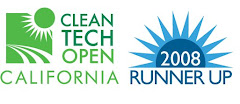New York Times
The coal ash pond that ruptured and sent a billion gallons of toxic sludge across 300 acres of East Tennessee last month was only one of more than 1,300 similar dumps across the United States — most of them unregulated and unmonitored — that contain billions more gallons of fly ash and other byproducts of burning coal.
Like the one in Tennessee, most of these dumps, which reach up to 1,500 acres, contain heavy metals like arsenic, lead, mercury and selenium, which are considered by the Environmental Protection Agency to be a threat to water supplies and human health. Yet they are not subject to any federal regulation, which experts say could have prevented the spill, and there is little monitoring of their effects on the surrounding environment.
In fact, coal ash is used throughout the country for construction fill, mine reclamation and other “beneficial uses.” In 2007, according to a coal industry estimate, 50 tons of fly ash even went to agricultural uses, like improving soil’s ability to hold water, despite a 1999 E.P.A. warning about high levels of arsenic. The industry has promoted the reuse of coal combustion products because of the growing amount of them being produced each year — 131 million tons in 2007, up from less than 90 million tons in 1990.






No comments:
Post a Comment